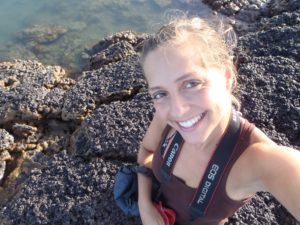 Author: Dr Rita Patricio. Rita is now a postdoc jointly between MARE – Marine and Environmental Science Centre – ISPA, Portugal and the University of Exeter, in the project ‘Consolidation of Marine Turtle Conservation in Guinea-Bissau’, funded by the MAVA foundation.
Author: Dr Rita Patricio. Rita is now a postdoc jointly between MARE – Marine and Environmental Science Centre – ISPA, Portugal and the University of Exeter, in the project ‘Consolidation of Marine Turtle Conservation in Guinea-Bissau’, funded by the MAVA foundation.
For my PhD in Exeter I conducted fieldwork at the Bijagós Archipelago, Guinea-Bissau, where I had the chance to study one of the most impressive sea turtle populations in the world under the supervision of Prof Annette Broderick, Prof Brendan Godley and Dr Paulo Catry from MARE – ISPA, Portugal. I finished my PhD at the University in 2017, and I continue to work in this amazing site as post-doctoral fellow. My work in Guinea-Bissau is very rewarding because it is rooted in participation with local communities, and in strong collaboration with the national authorities for biodiversity conservation (Institute for Biodiversity and Protected Areas – IBAP). Our co-developed scientific outputs inform the management of marine turtles and their habitats.
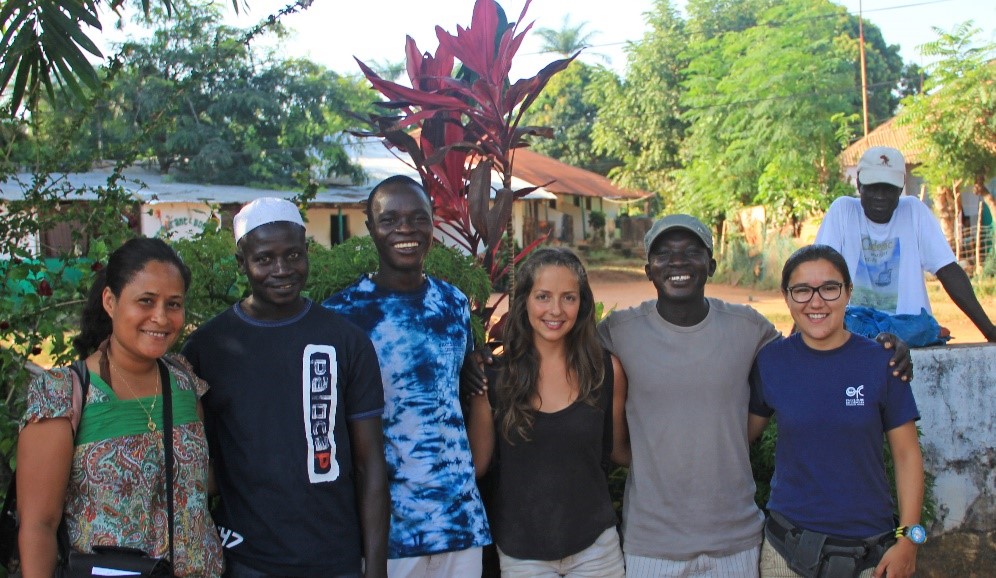
The Bijagós Archipelago and Poilão Island
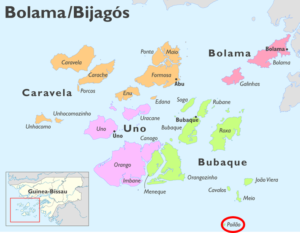
Located offshore Guinea-Bissau (West Africa), the Bijagós Archipelago is a sanctuary for iconic fauna, such as marine turtles, manatees, hippopotamus, and several species of migratory sea birds and waders. This biodiversity led to the designation of the Bolama-Bijagós UNESCO Biosphere Reserve in 1996.
The beaches of the archipelago are used by four species of sea turtles for nesting: the green turtle Chelonia mydas, the olive ridley Lepidochelys olivacea, the hawksbill Eretmochelys imbricata and the leatherback Dermochelys coriacea, and important foraging grounds for green turtle juveniles have also been identified in the area.
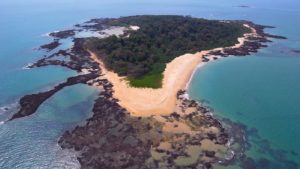
A small island in the southernmost end of the Bijagós, Poilão Island (10°52’N, 15°43’W), with a beach extending for only 2 km, hosts the third largest green turtle rookery in the Atlantic, the largest in Africa, with an average of 27000 clutches laid per year (2013 – 2017).
Our findings
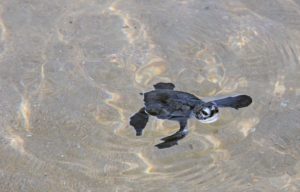
Through my PhD research, we have learnt a great deal about the major green turtle rookery in Poilão and hopefully contributed towards raising awareness as to its importance.
Using genetic analysis, we estimated that the connectivity of Poilão goes well beyond the African continent, with some juveniles dispersing across the Atlantic, reaching South American foraging grounds. This is a major undertaking for the small turtles and underlines the regional importance of this population.
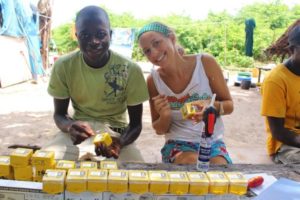
During the nesting season I used temperature dataloggers to record the incubation conditions at the nesting beach, as this defines the sex of the hatchlings. If temperatures are above a certain limit only females are ‘born’, and extreme temperatures can cause embryo mass mortality; worrying attributes with the undergoing climate change. We found that the native forest at Poilão is key to keeping ‘healthy’ hatchling sex ratios and predicted that this rookery is likely the largest source of male green turtle hatchlings in the Southern Atlantic.
We also realized that there were different preferences in nesting habitats among nesting females in Poilão, but that they are very faithful to their nesting site, typically returning to the same habitat (i.e. either the exposed beach or the forested sand) and within less than 50 metres of their first nest! This is a really fine-scale philopatry, and turtles seem to maintain this fidelity across nesting seasons.
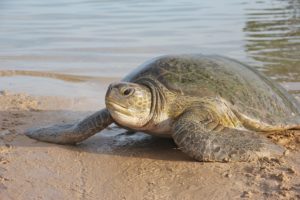
Another potential threat associated with climate change is sea-level-rise leading to increase flooding of the nesting beach. Using a drone coupled with a digital camera we collected aerial photos at Poilão and with photogrammetry analysis we created digital elevation models of the nesting beach, to estimate impacts of projected sea level rise. Taking current IPCC scenarios, as much as 33.4 to 43.0% of the current nesting habitat could be underwater by 2100.
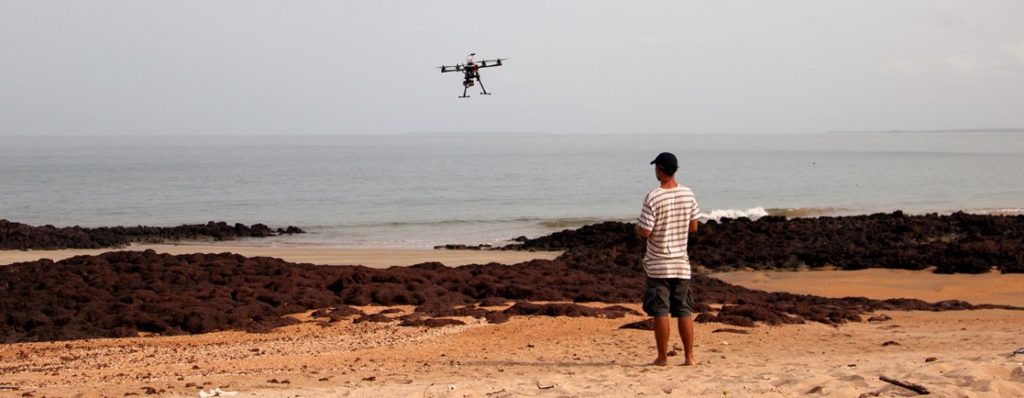
Under future climate change scenarios, females nesting in the upper shaded areas of the beach should have higher fitness, because their nests will be more protected from the impacts of both extreme temperatures and sea-level-rise. Individual consistency in nesting microhabitat should provide opportunity for natural selection to occur.
Future research
For my post-doc I will be looking into the post-breeding migratory paths of nesting green turtles from Poilão, using satellite tracking devices. We will deploy these in August 2018, so soon we will have more information that will help us to assess the connectivity of this major population and the potential threats outside the nesting beach. I will also be monitoring a feeding ground for juvenile green turtles located in the most offshore islands of the Bijagós, Unhocomo and Unhocomozinho, and engaging the local communities in our research work.
#ExeterMarine is an interdisciplinary group of marine related researchers with capabilities across the scientific, medical, engineering, humanities and social science fields. If you are interested in working with our researchers or students, contact Michael Hanley or visit our website!
